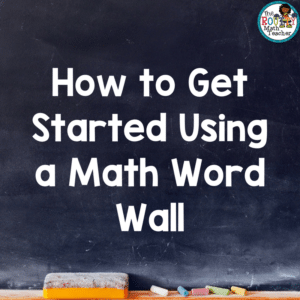
Math Starters: 10 Simple Strategies

Ignite student learning with math starters— quick activities used at the beginning of math class to engage your kids’ critical thinking and problem solving skills. This post shares 10 math starters that will jump-start student learning.
On my first day as a middle school teacher, my principal said the strangest thing.
He said, “Your students cannot leave during the first five or last five minutes of class.”
Why? I thought to myself.
Maybe he didn’t want students to get caught in a tardy sweep?
I had no clue.
“Because,” as he said, “they are the most important minutes of the class period.”
I’d never heard that before, but it made me stop and think about the message behind it.
As I thought more about this expectation, I finally understood.
I needed to grab my students’ attention during the first five minutes of class– which meant I should program the first five minutes with a fun and engaging math starter.
What are Math Starters?
Math starters, critical thinking activities, designed to get students thinking about math, provide opportunities to “sneak” in grade-level content and skills in a fun and engaging way. Intended to take no more than 5 -10 minutes of instructional time, starters can include a wide variety of tasks.
Over the years, I have used a number of starters, including number of the day and word wall activities; however, my favorite activities are challenges that allow me to reinforce a variety of critical thinking and problem-solving strategies.
Math Starter Ideas
Here’s a list of my favorite ways to jump-start my math class.
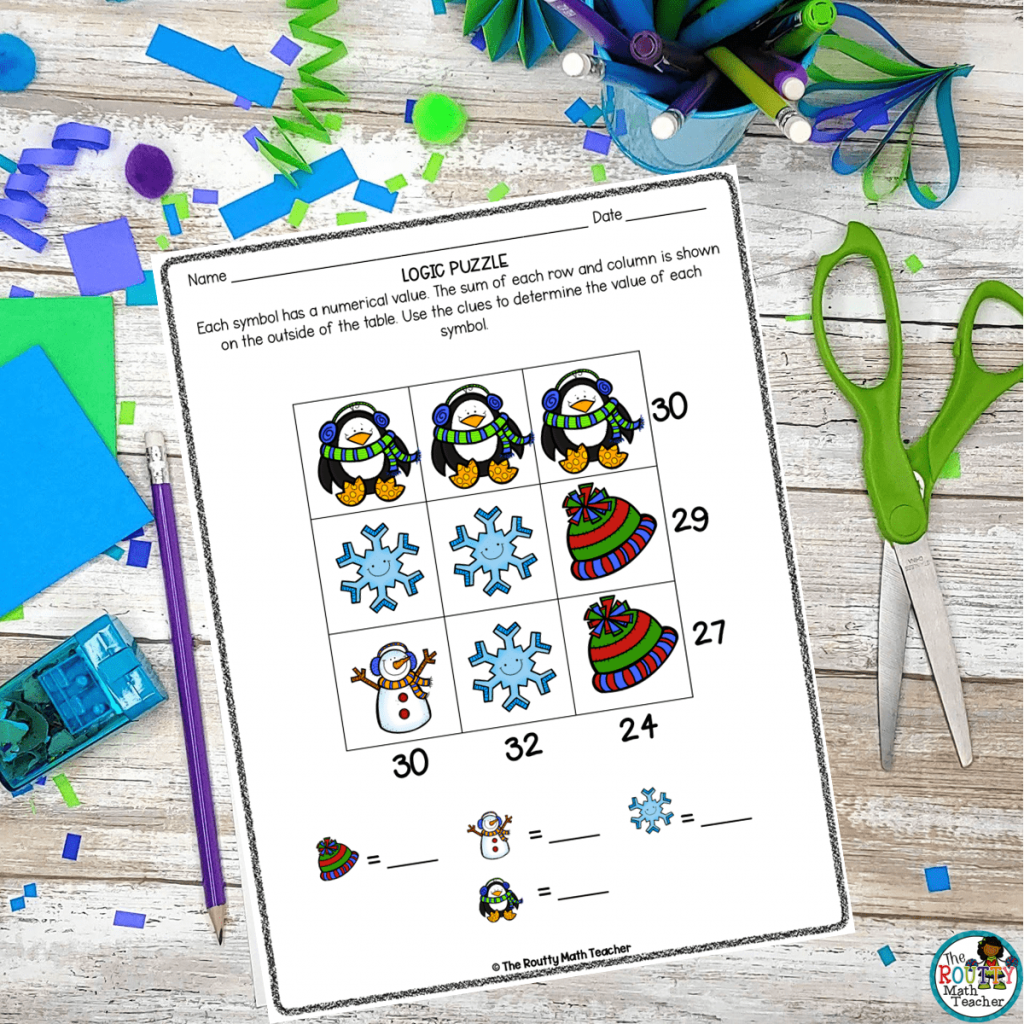
Emphasize Algebraic Thinking
1. Ask students to find five ways to represent a number, such as 1000, or have students represent the day of the month or the ____ day of school in a variety of ways.
2. Encourage algebraic thinking with number logic. To complete the task, students must determine the value of one or more symbols, such as snowflake + snowflake = 12 and snowflake – snowman = 2.
3. Challenge students with a logic puzzle. To create this puzzle, fill a 3 x 3 grid with three or four different objects, such as some fun seasonal erasers (you will need multiples of some objects). Then assign each object a value (keep it secret). Record the sum of each row or column on the outside of the table and challenge the students to find the value of each object. (See the picture above for an example.)
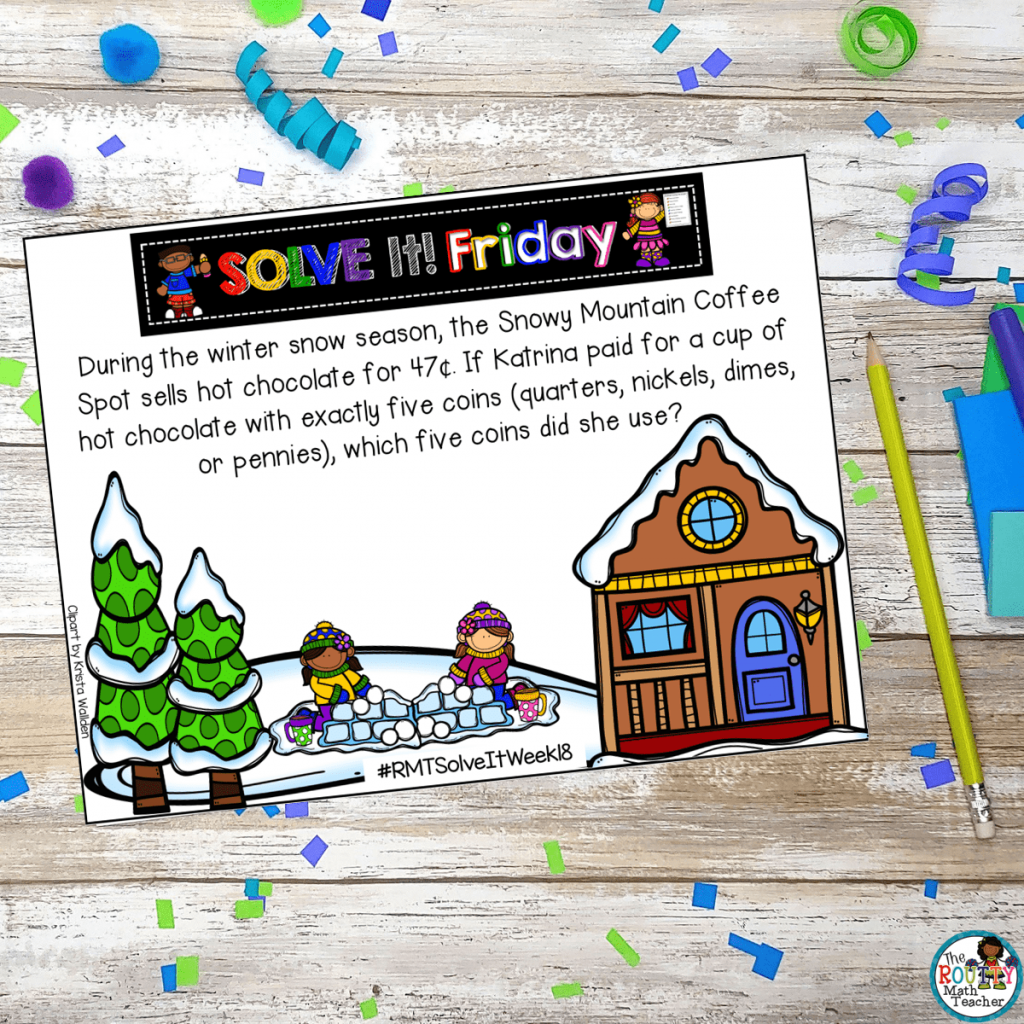
Encourage Problem Solving
4. Give students a quick problem-solving task to complete, such as “During the winter snow season, the Snowy Mountain Coffee Spot sells hot chocolate for 47 cents. If Katrina paid for a cup of hot chocolate with exactly five coins (quarters, nickels, dimes, or pennies), which five coins did she use?” Note: Consider opening the task by removing the condition of “five” to say “which coins did she use?” (See the image above.)
5. Challenge students with an Open Middle task. These tasks end with the same solution but have multiple solution paths to allow students at various levels to achieve success.
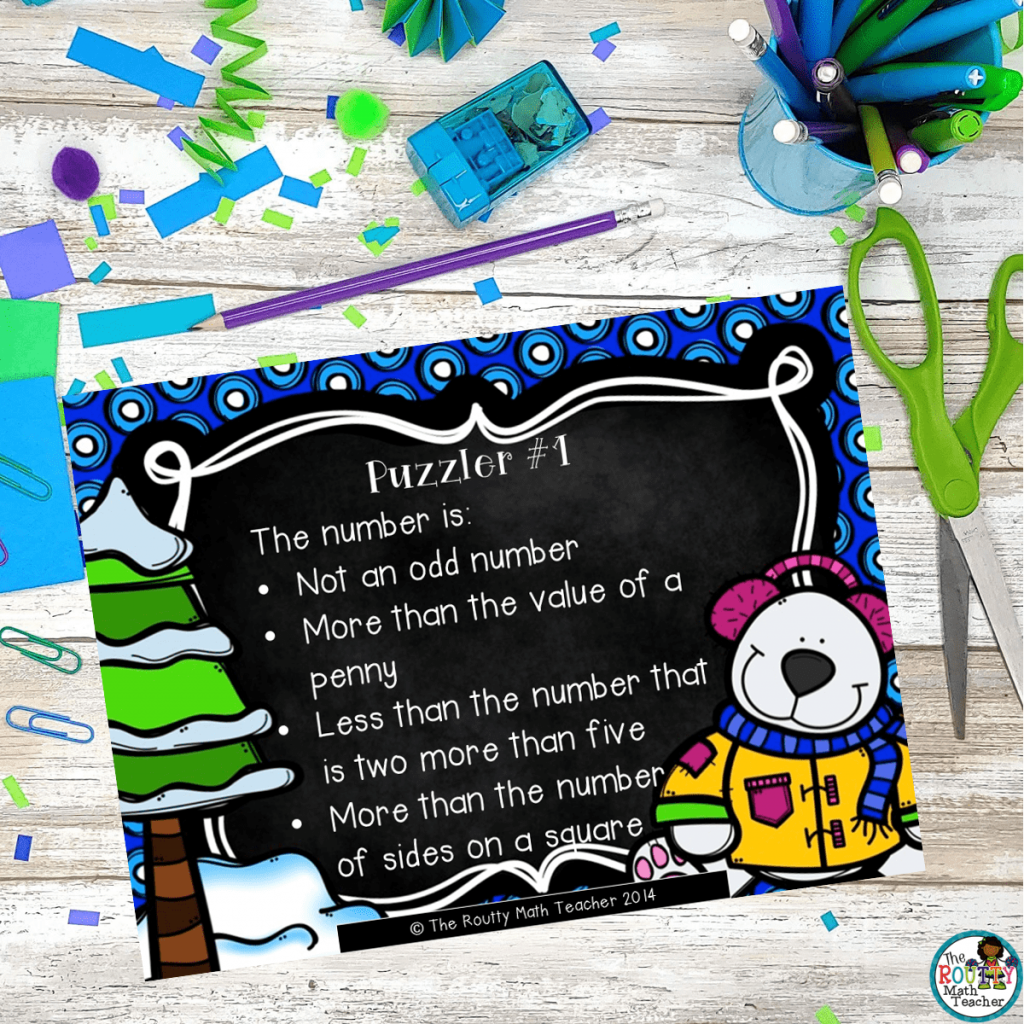
Use Clues to Eliminate Options
6. Give students clues to determine the mystery number. See the example below.
The number is:
- not an odd number,
- more than the value of a penny,
- less than the number that is two more than five,
- more than the number of sides on a square.
7. Using a set of pattern blocks, give students clues, and have them sequence the pattern blocks within a horizontal set of four numbered boxes. For example, students can order the hexagon, the blue rhombus, the trapezoid, and the triangle with the following clues.
- There is a quadrilateral in the even-numbered boxes.
- The shape with the least number of sides is not on the right side.
- The shape with one pair of parallel sides is not next to the triangle.
Analyze Relationships
8. Review math vocabulary with “What’s the Relationship?” To use this activity, write 5 – 7 related math words on the board. Then have students determine how the words are related to each other. Add a twist by including a non-related word and ask students to determine which word doesn’t belong.
9. Create a Venn Diagram with pattern blocks and then ask students to determine the common attribute for each set of shapes.
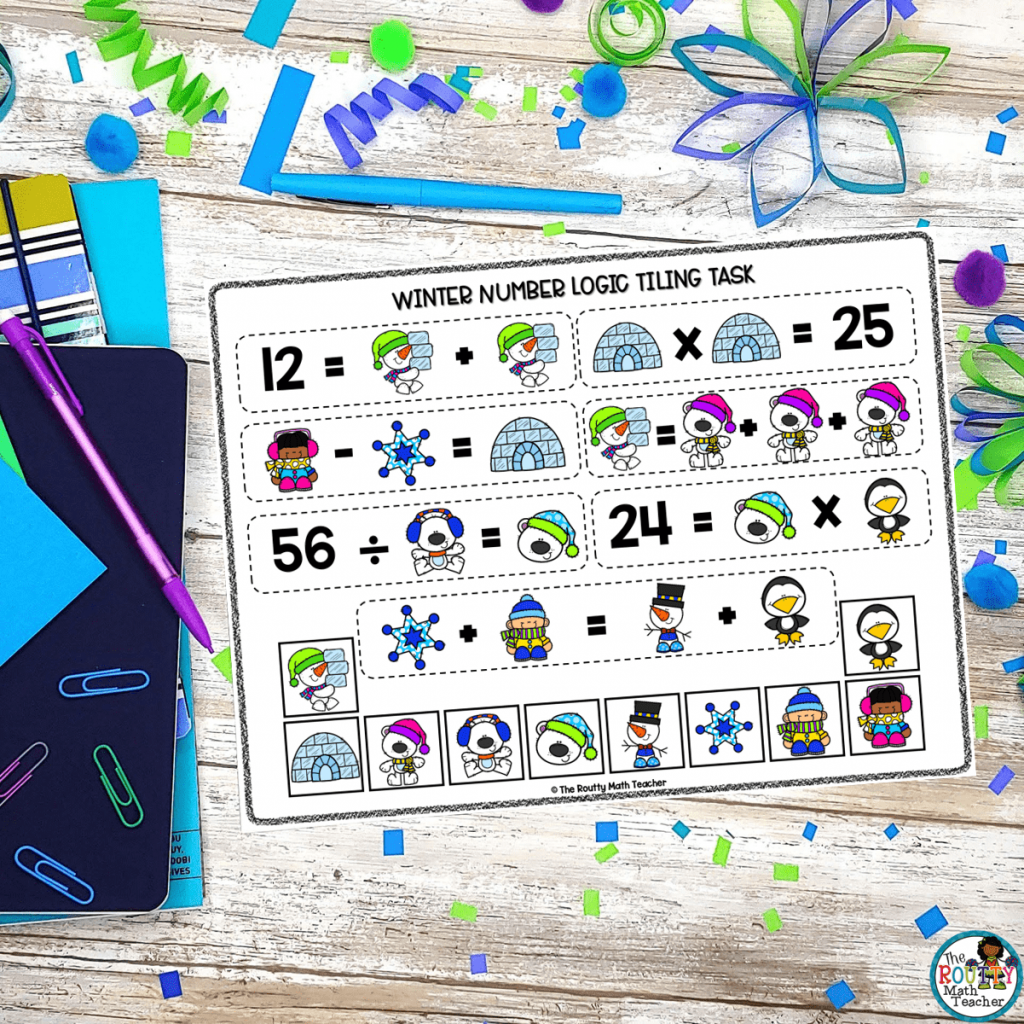
Build Number Sense
10. Tiling tasks require students to use a set of numbered tiles, 0-9, to complete a set of problems. Typically, each tile fits in one, and only one, solution. Use tiling tasks, like the one above, to challenge students to find the value of each symbol. (Use the form below to grab this freebie and challenge your students!)
Engage ‘Em from the Start!
Let’s jump-start the new semester with a bang! Start your next math class with one of the activities above. Then tell us all about it in the comments below.
Sound Off!
Give one of the ideas above a try. Then tell us about your experience in the comments below.




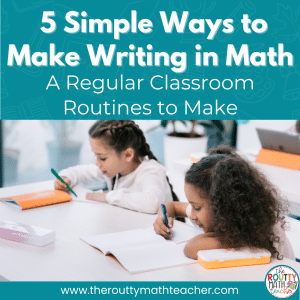

One Response
Thank your for the resources